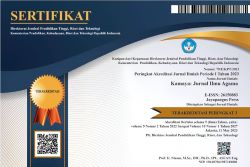Symbolic Representation Of Śiwa Naṭarāja In The Balinese Dance Creativity And Its Impact On Health Maintenance: A Literature Review
Keywords:
Symbolic Representation, Śiwa Naṭarāja, Balinese Dance, The Health MaintenanceAbstract
This study aims to study the representation of the Śiwa Naṭarāja symbol as the creative spirit of Balinese dance and its implications for the health. This research is designed in an interpretive qualitative type to find answers to the formulation of research problems. This study formulates three findings as answers to research problems. First, the description of Śiwa Naṭarāja symbol in the Indian tradition is contained in Vedic literature and is very developed in the South Indian region. Second, the representation of the symbol Śiwa Naṭarāja is used as a spirit in dance creativity in Balinese society related to elements of Balinese culture which have a very high value for improving the quality of people's lives. Art creativity in the life of Balinese people is closely related to building character which is determined by the aesthetic values contained in the artistic creativity which is able to build refinement of the buddhi (intellect) which in its accumulation can create a better character development. Third, the implication of the expression of rhythm in dance with health care according to Hindu teachings is a strong relationship. The teachings in the Vedic scriptures mandate the activities of dancing, singing and laughing as vehicles for building an atmosphere of joy. This condition has the position of creating positive feeling in order to build a balance of body immunity which at the end has a high bargaining power against disease attacks. Dancing in a social dimension is none other than the framework of cultivating and strengthening brotherhood ties which also have the opportunity to build a healthy atmosphere.
References
Lad, Vasant dan Svoboda, Robert E. (2007). Āyurveda. Terjemahan Agus Mantik. Surabaya: Pāramita
Mantra, I.B., (1996), Landasan Kebudayaaan Bali, Denpasar: Yayasan Dharma Sastra
Maswinara I Wayan, (1998), Sistem Filsafat India, Surabaya: Paramita.
Natalia, Dian. (2013). Terapi Musik Bidang Keperawatan. Jakarta: Mitra Wacana Media
Nawawi, H. (1983). Metode Penelitian Bidang Sosial. Yogyakarta: Gajah Mada University Press
Pudja, G. (2003). Bhagavad Gītā: Pancamo Veda. Surabaya: Paramita.
Radhakrisnan S. Religion and society, (2003), Denpasar :Program Magister Unhi dan Widya Dharma
Redig, I. W., (2003) Estetika Seni Arca India dan Pengaruhnya di Indonesia, dalam Masalah Budaya dan Pariwisata dalam pembangunan Suntingan I Gusti Ngurah Bagus, Denpasar : Program Studi Magister (S2) Kajian Budaya
Robbins, Anthony. (2019). Unlimited Power. Terjemahan Iryani Syahrir & Dieni Purwandari. Cetakan I. Jakarta: Phoenix Publishing House
Soundararajam, J. (2004). Nataraja in South Indian Art. Delhi: Sarada Publishing House
Suamba, I.B.P. (2007). Śiwa Naṭarāja dan Estetika Hindu. Denpasar: Yayasan Dharma Sastra
Suamba, I.B.P. (2003), Dasar-Dasar Filsafat India, Denpasar : Program Magister Unhi dan Widya Dharma
Suamba, I.B.P. (2005). Śiwa Naṭarāja Mūrti dan Aṣṭa Mūrti Śiwa : Landasan Kesenian Hindu. Mudra: Jurnal Seni BudayaVo. 17. No. 2. Halaman 1-12
Suka Yasa, I W. (2007). Teori Rasa: Memahami taksu, Ekspresi, dan Metodenya. Denpasar: Widya Dharma
Suprayogo Iman dan Tobroni. (2001). Metodologi Penelitian Sosial-Agama. Bandung: Remaja Rosdakarya
Sumawa I Wayan, Raka Krisnu T.Raka, (1992). Materi Pokok Darsana. Jakarta:Ditjen Bimas Hindu Buddha dan UT.
Titib, I Made. (1998), Veda, Sabda Suci, Pedoman Praktis Kehidupan, Surabaya: Paramita
Triguna, I.B.G., (2003), Estetika dan Kebudayaan Bali, dalam Estetika Hindu dan Pembangunan Bali, Suntingan I.B.G. Yudha Triguna, Denpasar: Program magister Ilmu Agama dan Kebudayaan Universitas Hindu Indonesia Bekerjasama dengan Penerbit Widya Dharma
Yudabakti I M. dan I Wayan Watra, (2007), Filsafat Seni Sakral Dalam Kebudayaan Bali, Surabaya: Paramita
Downloads
Published
How to Cite
Issue
Section
License
An author who publishes in the Kamaya : Jurnal Ilmu Agama agrees to the following terms:
- Author retains the copyright and grants the journal the right of first publication of the work simultaneously licensed under the Creative Commons Attribution-ShareAlike 4.0 License that allows others to share the work with an acknowledgement of the work's authorship and initial publication in this journal
- Author is able to enter into separate, additional contractual arrangements for the non-exclusive distribution of the journal's published version of the work (e.g., post it to an institutional repository or publish it in a book) with the acknowledgement of its initial publication in this journal.
- Author is permitted and encouraged to post his/her work online (e.g., in institutional repositories or on their website) prior to and during the submission process, as it can lead to productive exchanges, as well as earlier and greater citation of the published work (See The Effect of Open Access).
Read more about the Creative Commons Attribution-ShareAlike 4.0 Licence here: https://creativecommons.org/licenses/by-sa/4.0/.





